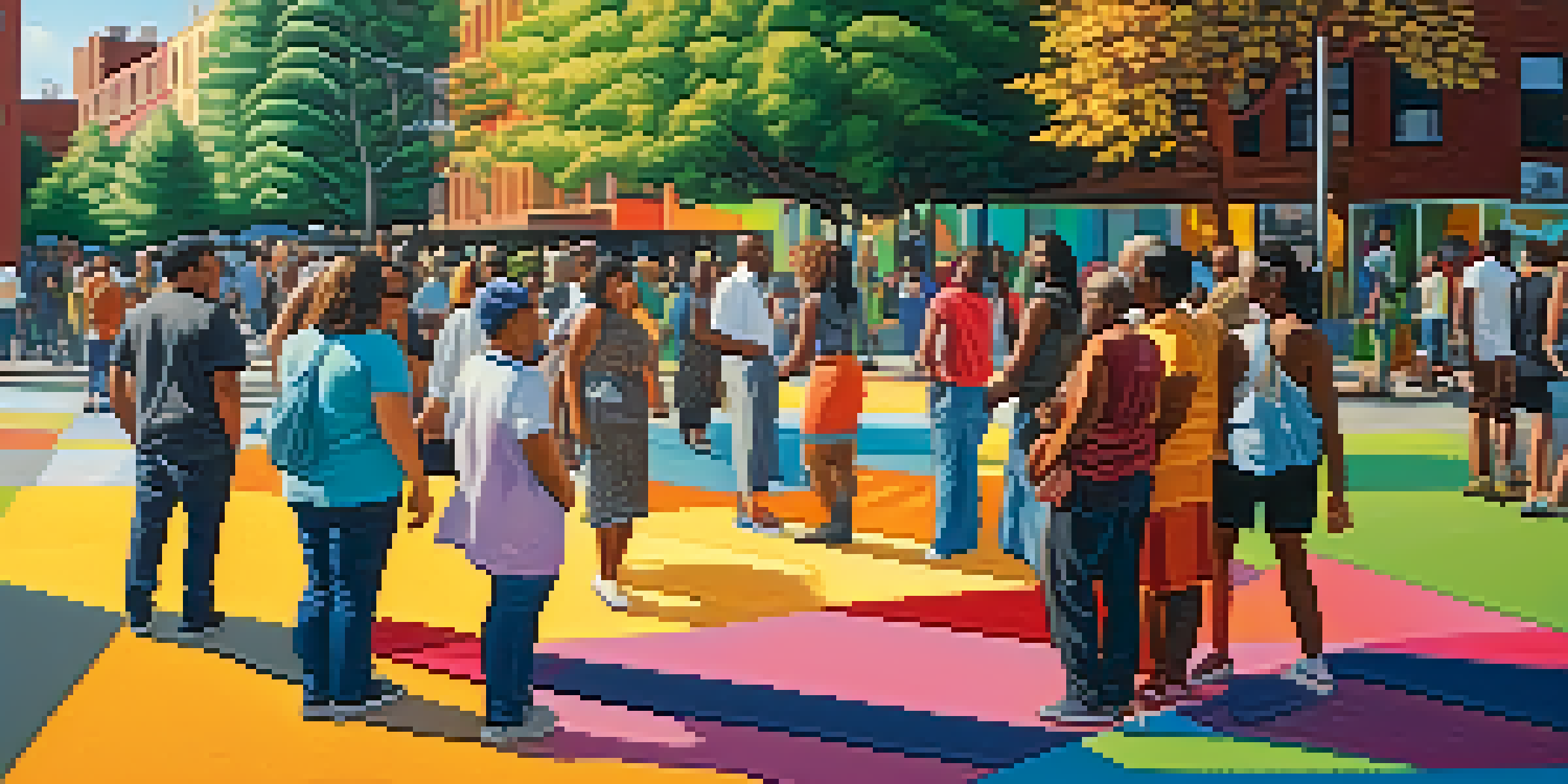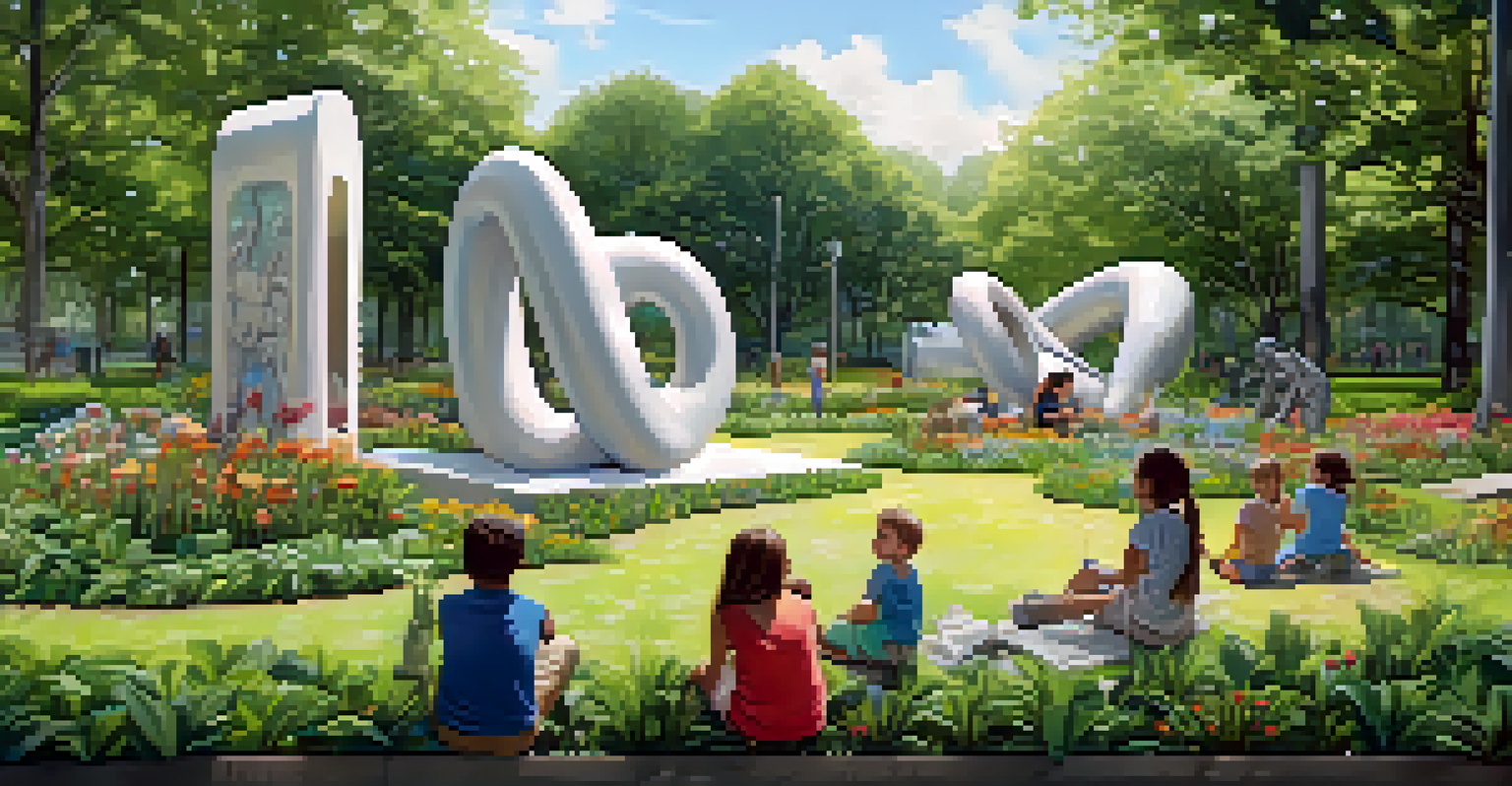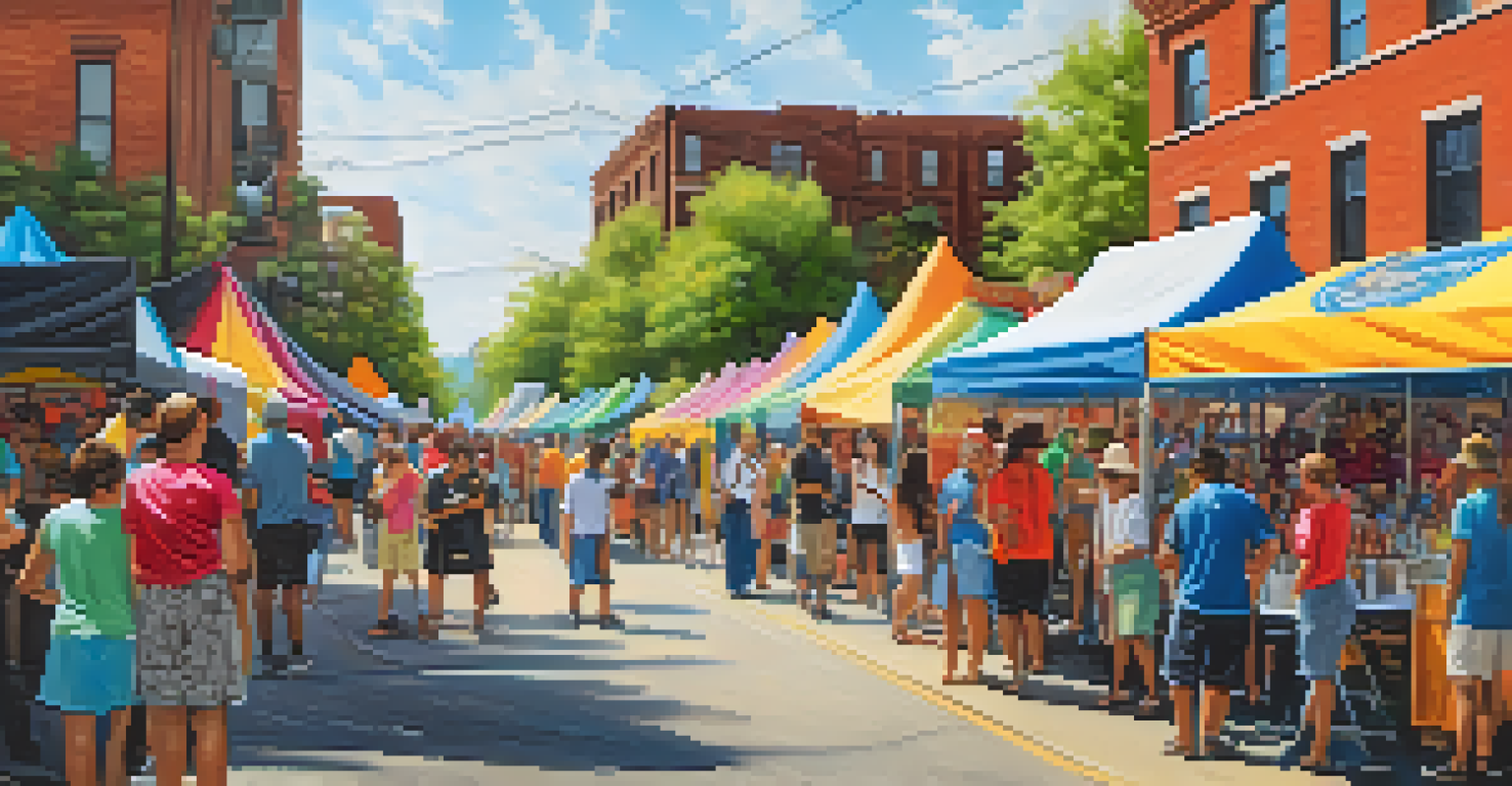Art and Public Policy: Collaborations That Change Communities

The Intersection of Art and Public Policy
Art and public policy may seem like an unlikely duo, but they can create powerful synergies. When policymakers collaborate with artists, they tap into creativity that can address societal issues in innovative ways. This intersection allows for a multi-faceted approach to problem-solving, emphasizing the importance of community input and engagement.
Art is not a mirror held up to reality, but a hammer with which to shape it.
For instance, public art projects can illuminate local challenges, such as homelessness or environmental concerns, prompting discussions among community members and leaders. Artists often have unique insights into cultural contexts, which can inform more effective policy decisions. This collaboration helps ensure that policies resonate with the people they aim to serve.
Moreover, art has the potential to humanize data and statistics, making complex issues more accessible. By visualizing problems through artistic expressions, communities can better understand and empathize with the challenges they face. This connection fosters a sense of belonging and collective responsibility.
Community Engagement Through Artistic Expression
One of the most compelling aspects of art is its ability to engage communities. Art initiatives often invite residents to participate, allowing them to express their perspectives and experiences. This participatory approach not only gives a voice to individuals but also fosters a sense of ownership over their community.

For example, mural projects in urban neighborhoods have become a popular way to beautify spaces while telling local stories. These murals often reflect the cultural heritage of the community, creating pride and a shared identity among residents. When people see themselves represented in public art, it cultivates a deeper connection to their environment.
Art Enhances Community Engagement
Art initiatives invite community participation, fostering a sense of ownership and shared identity among residents.
Additionally, these artistic endeavors can bridge gaps between diverse groups within a community. Collaborative art projects encourage dialogue among individuals from different backgrounds, fostering understanding and unity. This shared experience can lead to stronger social bonds and a more cohesive community.
Transformative Impact of Public Art Initiatives
Public art initiatives have the power to transform spaces and perceptions. They can revitalize neglected areas, making them more inviting and engaging. Through thoughtful design and execution, public art can turn ordinary streets into vibrant corridors filled with creativity and inspiration.
The arts are not a luxury; they are a necessity. They are the heart of a community.
Take, for instance, the rise of pop-up art installations in vacant lots or underutilized public spaces. These temporary projects not only draw attention to the potential of these areas but also encourage community involvement. When residents see creative possibilities in their surroundings, it can spark a sense of hope and possibility.
Furthermore, the presence of public art can lead to increased foot traffic and economic activity in neighborhoods. As more people are drawn to these artistic spaces, local businesses often benefit from the influx of visitors. This symbiotic relationship highlights how art can serve as a catalyst for economic revitalization.
Art as a Tool for Social Change
Art has long been a powerful tool for social change, capturing the essence of movements and struggles. Artists often use their craft to comment on social injustices, raising awareness and inspiring action within communities. This ability to provoke thought and dialogue positions art as a vital component of activism.
For example, art installations that address climate change or racial inequality can move audiences to reflect on their roles in these issues. By confronting uncomfortable truths through artistic expressions, communities can begin to mobilize around solutions. This can lead to grassroots movements that challenge existing policies and advocate for change.
Public Art Drives Economic Growth
Public art projects can revitalize neighborhoods, attracting foot traffic and benefiting local businesses.
Moreover, collaborative art projects can serve as platforms for marginalized voices. By prioritizing inclusivity, these initiatives can highlight stories that might otherwise go unheard. This representation is crucial in shaping public policy that is equitable and just.
The Role of Government in Supporting Artistic Endeavors
Government support for the arts is essential in fostering collaborations that benefit communities. By investing in public art programs and grants, policymakers can stimulate creative projects that address local needs. This financial backing not only elevates the arts but also reinforces the idea that creativity plays a crucial role in societal development.
Additionally, partnerships between government agencies and artists can lead to innovative solutions to public challenges. When public institutions recognize the value of artistic input, they create a more inclusive decision-making process. This collaboration can lead to policies that are grounded in the lived experiences of community members.
Furthermore, by prioritizing the arts in public policy, governments can foster a culture of creativity and resilience. Communities supported by robust artistic initiatives often demonstrate greater social cohesion and adaptability in facing challenges. This investment creates a lasting legacy of collaboration that enriches local culture.
Case Studies: Successful Art and Policy Collaborations
Examining successful case studies can provide valuable insights into the impact of art on public policy. For instance, the 'Chicago Public Art Program' has transformed neighborhoods through murals, sculptures, and community art projects. These initiatives not only beautify spaces but also engage residents in meaningful dialogue about their community's future.
Another example is the 'ArtPlace America' initiative, which supports creative placemaking across the country. By funding projects that blend art with community development, they have seen positive changes in local economies and social dynamics. These case studies illustrate the tangible benefits of integrating art into public policy.
Art as a Catalyst for Change
Art serves as a powerful tool for social change, raising awareness and mobilizing communities around critical issues.
Such examples underscore the importance of collaboration between artists, community members, and policymakers. They show that when diverse voices come together, the results can be transformative, leading to stronger, more vibrant communities.
Future Directions for Art and Public Policy Collaboration
Looking ahead, the potential for art and public policy collaborations is vast. As communities continue to face new challenges, the role of artists as agents of change becomes increasingly vital. By embracing innovative approaches and technologies, the arts can further enhance community engagement and inclusivity.
Moreover, as society grapples with issues like climate change and social justice, the need for artistic expression in policy conversations will grow. Artists can help envision more sustainable futures, making complex ideas more relatable and actionable. This forward-thinking approach can inspire communities to take bold steps toward change.

Ultimately, fostering a culture of collaboration between artists and policymakers can create resilient communities. By valuing the arts as essential components of public discourse, we can build a future where creativity and innovation thrive, leaving a lasting impact on society.